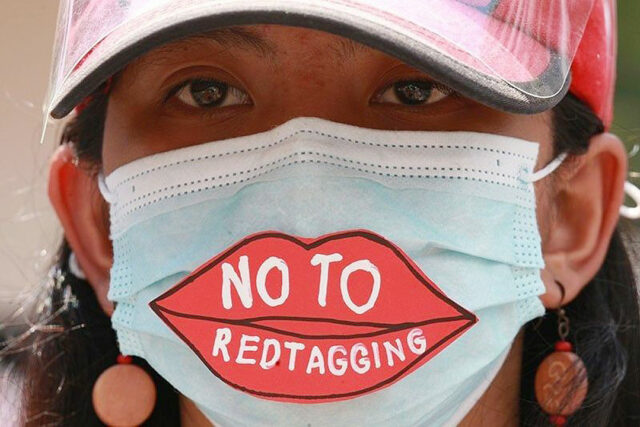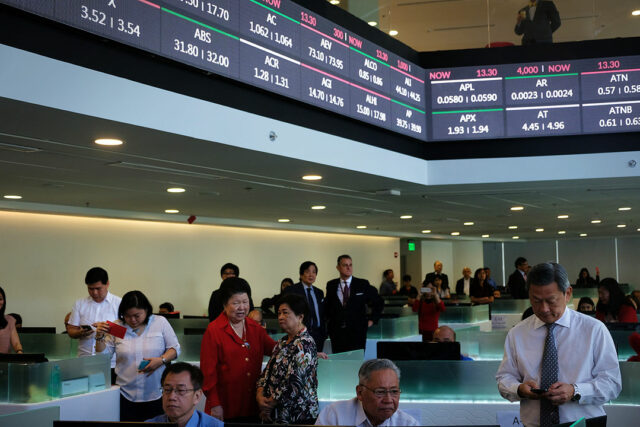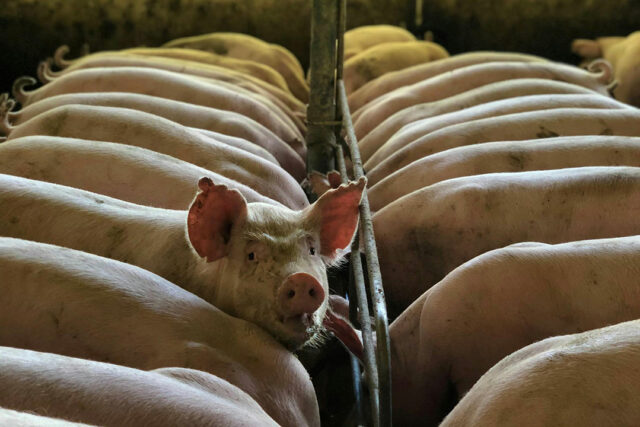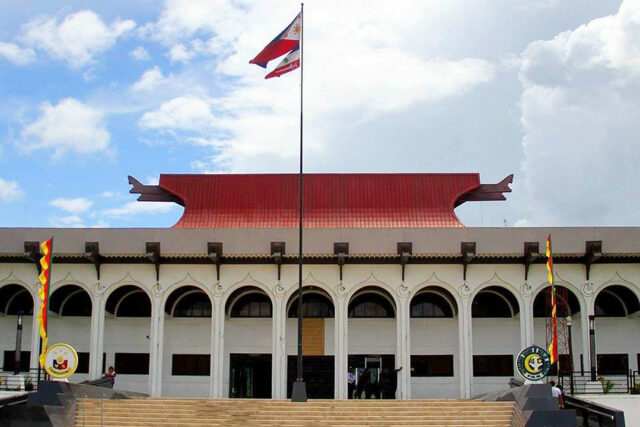THE MAIN INDEX climbed to a 19-month high on Monday, moving closer to the 7,000 mark, on hopes of further rate cuts by the Bangko Sentral ng Pilipinas (BSP) amid expectations of easing inflation.
The benchmark Philippine Stock Exchange index (PSEi) rose by 0.69% or 48.16 points to close at 6,984.25 on Monday, while the broader all shares index increased by 0.67% or 25.19 points to finish at 3,778.05.
This was the PSEi’s best close in more than 19 months or since it finished at 7,027.38 on Feb. 3, 2023.
The index tested the 7,000 level intraday, hitting a high of 7,025.46.
“The local market rose this Monday as investors cheer the prospects of further rate cuts by the Bangko Sentral ng Pilipinas,” Philstocks Financial, Inc. Senior Research Analyst Japhet Louis O. Tantiangco said in a Viber message. “This comes on the back of the favorable inflation figures seen for August and the increasing likelihood of the Federal Reserve starting with their monetary easing in their policy meeting next week.”
Headline inflation eased to a seven-month low of 3.3% in August from 4.4% in July and 5.3% in the same month a year ago, within the BSP’s 3.2-4% forecast for the month and below the 3.7% median estimate in a BusinessWorld poll of 15 analysts. The slower-than-expected August print could justify further policy easing, analysts have said.
The BSP on Aug. 15 reduced its policy rate by 25 basis points (bps) to 6.25%, marking its first easing move in almost four years.
BSP Governor Eli M. Remolona, Jr. has said they could cut rates by another 25 bps within the year. The Monetary Board’s last two meetings are on Oct. 17 and Dec. 19.
Meanwhile, the Fed is widely expected to begin its easing cycle at their Sept. 17-18 policy meeting, with markets pricing in a 25-bp cut at that review and a total of 100 bps in reductions for this year. The US central bank has kept the federal funds target rate at the 5.25%-5.5% range following increases worth 525 bps from March 2022 to July 2023.
“Philippine shares just missed closing above 7,000 as investor continued to buy into the local market, with many expecting foreign fund flows to increase given the strong economic data in the country versus the rest of the region,” Regina Capital Development Corp. Head of Sales Luis A. Limlingan added in a Viber message.
Majority of sectoral indices ended higher. Financials rose by 1.35% or 29.36 points to 2,190.25; property went up by 1.17% or 32.63 points to 2,809.23; holding firms increased by 1.05% or 61.14 points to 5,835.08; and services climbed by 0.36% or 7.92 points to 2,198.43.
Meanwhile, mining and oil dropped by 0.82% or 66.19 points to 7,940.45; and industrials went down by 0.07% or 7.05 points to 9,263.22.
Value turnover rose to P7.12 billion on Monday with 804.4 million shares changing hands from the P6.12 billion with 783.45 million issues traded on Friday.
Decliners beat advancers, 104 versus 96, while 50 issues ended unchanged.
Net foreign buying surged to P1.03 billion on Monday from P407.48 million on Friday. — R.M.D. Ochave












